
漢德百科全書 | 汉德百科全书

 Architecture
Architecture
 Neo-Baroque architecture
Neo-Baroque architecture

 Architecture
Architecture
 Neoclassic architecture *
Neoclassic architecture *

 Architecture
Architecture
 Beaux Art
Beaux Art

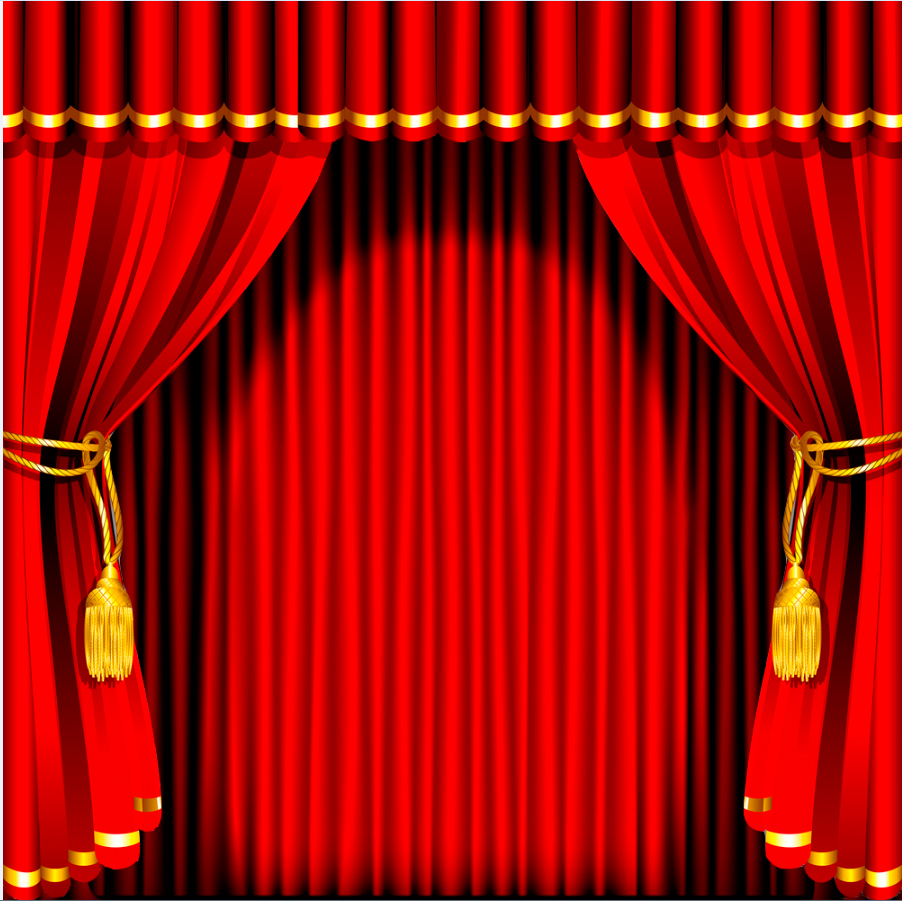 Performing Arts
Performing Arts
 France
France

 Ile-de-France
Ile-de-France

 Music
Music

 Music
Music
 Gesang
Gesang

 Music
Music
 Opera
Opera

 Dances
Dances
 Ballet
Ballet



Die Opéra Garnier, auch Palais Garnier genannt, ist eines der zwei Pariser Opernhäuser, die der staatlichen Institution Opéra National de Paris unterstehen (Das zweite ist die Opéra-Comique). Die Opéra Garnier wurde 1875 eröffnet und steht am rechten Seineufer im 9. Arrondissement. Ihren Namen verdankt sie ihrem Erbauer Charles Garnier. Seit der Eröffnung der Opéra Bastille im Jahre 1989 wird die Opéra Garnier hauptsächlich für Ballettaufführungen des hauseigenen Ballettensembles Ballet de l’Opéra de Paris genutzt, führt aber nach wie vor auch klassische Opern auf.
加尼叶歌剧院(法语:Opéra Garnier),通常称为巴黎歌剧院(法语:Opéra de Paris),于1861至1875年间建造,位于法国巴黎第九区,是一座拥有1979个座位的歌剧院。巴黎歌剧院是一座新巴洛克风格的建筑,由法国建筑师查尔斯·加尼叶(Charles Garnier)所设计,被认为是新巴洛克式建筑的典范之一。
在1989年坐落于巴士底广场的巴士底歌剧院落成前,加尼叶歌剧院是巴黎歌剧团的首选剧场。如今,加尼叶歌剧院多上演芭蕾舞剧目。
巴黎歌剧院与巴黎圣母院、卢浮宫以及圣心教堂被并称为巴黎的标志。
ガルニエ宮(Palais Garnier)は、フランスの首都パリにある歌劇場である。単にオペラ座(l'Opéra)と呼ばれることもある。パリ国立オペラの公演会場の一つである。
フランスの王立オペラの歴史は1669年にさかのぼる。作曲家ロベール・カンベール(Robert Cambert)と組んで宮廷オペラを作っていた詩人ピエール・ペラン(Pierre Perrin)の請願が、財務総監コルベールの仲立ちでルイ14世に許可され、『音楽アカデミー』ができたのである。この名称は時代とともに、政治体制とともに変わった[1]。
パリの王立ないし国立のオペラ劇団が公演する劇場も転々と変わり、ガルニエ宮は13代目である。それまでの劇場は、ルーヴル美術館(フランス革命までは『ルーヴル宮』)の中や隣だったことも、約1.5km離れていたこともあった[2]。
1800年12月、第一統領だったナポレオン・ボナパルトが爆弾に見舞われたのは、8代目のテアトル・デ・ザール(Théâtre des Arts)への途次であった。1858年1月14日、ナポレオン3世が爆弾を投げられたのは、11代目のサル・ル・ペルティエ(Salle Le Peletier)の正面であった。これを機に、以前からの新オペラ座建設計画が1860年9月29日の政令で具体化し、同年12月29日、ナポレオン3世の第二帝政を称える記念碑的建造物の設計が公募された。
折から、セーヌ県知事オスマンのパリ市街区の整理再構築(パリ改造)が進行中で、建設用地は取り払われ空き地となる現在地と決まっていた。
171の応募の中に一等賞はなく、佳作が6件であった。その中からシャルル・ガルニエの案が採択され[3]、1862年7月21日に最初の礎石が置かれた。
1874年12月に工事を終え、1875年1月5日に落成式が行われた。この劇場は設計者の名から「ガルニエ宮」と呼ばれることとなった。
着工から完成までの十余年間のフランスには、1867年のメキシコ出兵の失敗、1870年の普仏戦争の敗戦とナポレオン3世の亡命(翌年没)、1871年のパリ・コミューンと第三共和政の発足などの大事件が多く、新劇場の工事を休むこともあった。
外観および内装はネオ・バロック様式の典型と言われ、たくさんの彫刻を飾り、華美な装飾を施した豪華絢爛たるものである。また建材には当時、最新の素材とされていた鉄を使用した。これによって、従来不可能とされていた巨大な空間を確保することに成功した。2167の座席が5階に配分されており、観客収容規模でも当時最大の劇場であった。
なお、ガルニエ宮正面からパレ・ロワイヤルへ直に南下するオペラ座大通り(Avenue de l'Opéra)は、この建設工事の一環として開かれた。
第二次世界大戦中のドイツ軍の占領下では、ドイツ軍の管理下で営業を続けた。1964年以降、劇場の天井画はマルク・シャガールによるものが飾られて、現代的な新味も盛り込まれている。
1989年には新しいオペラ劇場としてオペラ・バスティーユ(Opéra Bastille)が完成し、以来ガルニエ宮では、バレエと小規模オペラ、管弦楽コンサートを中心とした運用が行われている。
The Palais Garnier (pronounced [palɛ ɡaʁnje] French  (help·info)) is a 1,979-seat opera house, which was built from 1861 to 1875 for the Paris Opera. It was called the Salle des Capucines, because of its location on the Boulevard des Capucines in the 9th arrondissement of Paris, but soon became known as the Palais Garnier, in recognition of its opulence and its architect, Charles Garnier. The theatre is also often referred to as the Opéra Garnier (French
(help·info)) is a 1,979-seat opera house, which was built from 1861 to 1875 for the Paris Opera. It was called the Salle des Capucines, because of its location on the Boulevard des Capucines in the 9th arrondissement of Paris, but soon became known as the Palais Garnier, in recognition of its opulence and its architect, Charles Garnier. The theatre is also often referred to as the Opéra Garnier (French  (help·info)) and historically was known as the Opéra de Paris or simply the Opéra,[7] as it was the primary home of the Paris Opera and its associated Paris Opera Ballet until 1989, when the Opéra Bastille opened at the Place de la Bastille.[8] The Paris Opera now mainly uses the Palais Garnier for ballet.
(help·info)) and historically was known as the Opéra de Paris or simply the Opéra,[7] as it was the primary home of the Paris Opera and its associated Paris Opera Ballet until 1989, when the Opéra Bastille opened at the Place de la Bastille.[8] The Paris Opera now mainly uses the Palais Garnier for ballet.
The Palais Garnier has been called "probably the most famous opera house in the world, a symbol of Paris like Notre Dame Cathedral, the Louvre, or the Sacré Coeur Basilica."[9] This is at least partly due to its use as the setting for Gaston Leroux's 1910 novel The Phantom of the Opera and, especially, the novel's subsequent adaptations in films and the popular 1986 musical.[9] Another contributing factor is that among the buildings constructed in Paris during the Second Empire, besides being the most expensive,[10] it has been described as the only one that is "unquestionably a masterpiece of the first rank."[11] This opinion is far from unanimous however: the 20th-century French architect Le Corbusier once described it as "a lying art" and contended that the "Garnier movement is a décor of the grave".[12]
The Palais Garnier also houses the Bibliothèque-Musée de l'Opéra de Paris (Paris Opera Library-Museum), although the Library-Museum is no longer managed by the Opera and is part of the Bibliothèque Nationale de France.[13] The museum is included in unaccompanied tours of the Palais Garnier.[14]
L’opéra Garniera, ou palais Garniera, est un théâtre national à vocation lyrique et chorégraphique dont l'édifice est structurant dans le 9e arrondissement de Paris et dans le paysage de la capitale française. Il est situé place de l'Opéra, à l'extrémité nord de l'avenue de l'Opéra et au carrefour de nombreuses voiesb. Il est accessible par le métro (station Opéra), par le RER (ligne A, gare d'Auber) et par le bus. L'édifice s'impose comme un monument particulièrement représentatif de l'architecture éclectique et du style historiciste de la seconde moitié du XIXe siècle. Sur une conception de l’architecte Charles Garnier retenue à la suite d’un concours, sa construction, décidée par Napoléon III dans le cadre des transformations de Paris menées par le préfet Haussmann et interrompue par la guerre de 1870, fut reprise au début de la Troisième République, après la destruction par incendie de l’opéra Le Peletier en 1873. Le bâtiment est inauguré le 5 janvier 1875 par le président Mac Mahon sous la IIIe République.
Cet opéra a été appelé « opéra de Paris » jusqu'en 1989, date à laquelle l'ouverture de l'opéra Bastille, également opéra de Paris, a influé sur son appellation. On le désigne désormais par le seul nom de son architecte: « opéra Garnier » ou « palais Garnier ». Les deux opéras sont aujourd'hui regroupés au sein de l'établissement public à caractère industriel et commercial « Opéra national de Paris », institution publique française dont la mission est de mettre en œuvre la représentation de spectacles lyriques ou de ballet, de haute qualité artistique. L'opéra Garnier fait l’objet d’un classement au titre des monuments historiques depuis le 16 octobre 1923.
L'Opéra Garnier, o Palais Garnier, è un teatro situato nel IX arrondissement di Parigi, facente parte de l'Opéra national de Paris.
Dal 16 ottobre 1923 è monumento storico di Francia.
La Ópera Garnier, también conocida como Palacio Garnier u Ópera de París, es uno de los edificios más característicos del XIX Distrito de París y del paisaje urbano de la capital francesa. Napoleón III ordenó su construcción al arquitecto Charles Garnier, quien lo diseñó en Estilo Imperio.
Desde su inauguración en 1875, la ópera fue llamada oficialmente Academia Nacional de Música-Teatro de la Ópera. Conservó su título hasta 1978, cuando fue renombrada Teatro Nacional de la Ópera de París. En 1989 la Compañía de la Ópera trasladó su sede al recién construido Teatro de la Bastilla y su vieja sede recibió el nombre de Palacio Garnier, donde permanece la Academia Nacional de Música. A pesar del cambio de nombre oficial y del traslado de la Compañía de la Ópera, el Palacio Garnier sigue siendo conocido popularmente por el nombre de Ópera de Garnier en París.
Пари́жская о́пера (фр. Opéra de Paris), то же, что Гранд-опера́ (Гранд-Опера́[1]; фр. Grand Opéra), в современной Франции известна как Опера́ Гарнье́ (фр. Opéra Garnier) — театр в Париже, один из самых известных и значимых театров оперы и балета мира.
Расположена во дворце Гарнье (Palais Garnier) в IX округе Парижа, в конце проспекта Оперы (avenue de l’Opéra), около одноимённой станции метро. Здание считается эталоном эклектической архитектуры в стиле боз-ар и относится к эпохе крупных преобразований города, воплощённых Наполеоном III и префектом Османом.
Долгое время здание театра именовалось Парижской оперой, но после открытия в 1989 году второй театральной площадки для Парижской национальной оперы — Оперы Бастилии, его стали называть именем архитектора Шарля Гарнье. Оба учреждения объединены в общественно-коммерческое предприятие «Парижская национальная опера» (Opéra national de Paris).




Als Ballett (von italienisch balletto, Diminutiv von ballo; deutsch Tanz), auch klassischer Tanz, wird der von Musik begleitete klassische künstlerische Bühnentanz bezeichnet, der oft vom Zeitgenössischen Tanz, Modern Dance oder Tanztheater unterschieden wird. Im Besonderen kann der Begriff auch folgende Bedeutungen haben:
- eine Tanzvorstellung auf einer Bühne zu Musikbegleitung, wobei die Darbietung hauptsächlich aus Tanz besteht oder Teil eines größeren Werkes (Oper, Operette, Musical) sein kann.
- eine Kunstform/Sparte am Theater neben Oper, Schauspiel und Konzert.
- ein Bühnenwerk, bei dem der Tanz im Mittelpunkt steht.
- Musik, die als Begleitung für Bühnentanz geschrieben wurde.
- ein Tänzer-Ensemble am Theater (Corps de ballet).
Traditionellerweise versteht man unter einem klassischen Ballett ein Handlungsballett. Auf Grundlage eines Librettos werden eine Musikkomposition und eine Choreografie erschaffen. Hinzu kommen Bühnenbild, Requisiten und Kostüme. Der Tanz selbst besteht aus Körperbewegungen im Raum, Gestik und Mimik.
芭蕾是一种外来艺术形式,起源于文艺复兴时期的意大利。当时的意大利还是一个城邦国家,各个城邦的君主为了炫耀自己的权力和财富,常常举办节庆演出,其中包括舞蹈演出,,也称“席间歌舞”。
随 着意大利宫廷与法兰西宫廷的联姻以及文化交流,“席间歌舞”传入了法国,当时这种演出形式盛极一时,其中最为宏伟、最受推崇的是1581年的《王后的喜芭 蕾》,既载歌载舞,又具有戏剧结构的雏型,所以被西欧史学家公认为第一部”真正的芭蕾“。芭蕾艺术的真正形成,是在路易十四执政的法国宫廷。他本人很喜欢 跳舞,12岁那年主演《卡桑德拉》中的太阳神,因而获得了“太阳王”的美名,在他的大力倡导下,芭蕾逐渐兴盛,并确立为一种独立的艺术形式。规定了脚的五 个基本位置。脚位是因古典舞需要稳定、平衡,在躯干失去重心时,能自如地向前后左右各方向倾斜舞动而形成的。自此,芭蕾才以其特有的训练法则,纳入了系统 的轨道,这种舞蹈即我们今天所说的古典芭蕾。(Quelle: www.zhwdw.com)
芭蕾是一种轻盈,舒缓,优雅的舞蹈。芭蕾起源于意大利,兴盛于法国,其部分手势可追溯至古埃及的祭祀舞蹈。芭蕾为法语“ballet”的译音,它的词源则是意大利语的“balletto”,为ballo的指小词,ballo 意为“舞蹈”。
芭蕾舞是一种表演舞蹈,发源于十五世纪,即意大利文艺复兴时期的宫廷。随后它在法国和俄罗斯发展成表演舞蹈。它是一种广泛流传,且具高度技术性的舞蹈,拥有法文专属术语。它在全球均具影响力,更定义了很多其他舞蹈的基础技巧。芭蕾舞需要长时间学习,在世界各地都有学校教授,并用自身文化继续把它发展下去。
芭蕾舞也可以是指一出含编舞及音乐的芭蕾舞剧。知名例子:胡桃夹子,就是一出最先由马利乌斯·皮提帕及刘·伊凡诺夫编舞、柴可夫斯基作曲的两幕芭蕾舞剧,而这些芭蕾舞剧都是由受过专业训练的艺人编舞及演出。很多古典芭蕾舞剧都是由古典音乐伴奏,配以华丽的戏服及舞台布景的。但是,一些由近代艺人如乔治巴兰钦创作的舞剧已经没有遵随以上的惯例。
像西方戏剧一样,早期芭蕾舞是禁止女性参与演出的,所有女角都由男演员反串。但后来此规例获得放宽,再加上足尖的引入,使芭蕾舞坛成了女性的天下。十八世纪有人便将长裙改短,又将鞋跟去掉,改穿平底软鞋。“浪漫芭蕾”时期,最有名的两个舞剧是“仙女”和“吉赛儿”,这时出现了芭蕾硬鞋。柴可夫斯基是芭蕾舞剧音乐创作大师,他创作了“睡美人”、“胡桃夹子”和“天鹅湖”等伟大的古典芭蕾舞剧。
バレエ(仏: ballet[1][2])は、西ヨーロッパで発生し広まった、歌詞・台詞を伴わない舞台舞踊。及びその作品を構成する個々のダンス。音楽伴奏・舞台芸術を伴いダンスによって表現する舞台である。物語性をもち、複数の幕をもつ舞踊劇が多い(「くるみ割り人形」「白鳥の湖」「眠れる森の美女」「ドン・キホーテ」など)。しかし20世紀以降には物語性を否定する作品も生まれた。一方で短い小品でありながら優れた物語性をもつものもある(「瀕死の白鳥」など)。事前に振付家によってバレエ独特の所作を指定されたものを演じ、即興作品は少ない。振付の仕方を振付術(コレオグラフィー)という。
ルネッサンス期のイタリアに起源を発する。当時、宮廷では余興として詩の朗読、演劇などが演じられていたが、その一部としてバロ(Ballo)と呼ばれるダンスが生まれた。宮廷の広間で貴族たちが歩きながら床に図形を描いていくもので、それをバルコニーから眺めるのが当時の楽しみ方であった。
1463年、グリエルモ・エブレオ『舞踏芸術論』のなかでBallettoという語が初めて用いられている。
1496年にはレオナルド・ダ・ヴィンチが衣裳と装置を担当した「楽園」が初演された。
16世紀、ジョヴァンニ・ジャコモ・ガストルディにより世俗合唱曲が流行すると、その歌に踊りを加えたバレット(Balletto)が生まれ、やがてバレッティ(Balletti)と呼ばれるようになった。
ドメニコ・ダ・ピアチェンツァ(ドイツ語版)など舞曲の作曲家や、ドメニコ・ダ・フェッラーラ(フェラーラ侯レオネルロ・デステ(ポーランド語版)に仕えた)などの舞踏教師が登場し、イタリアの貴族が盛んに舞踏会を開催したことが分かる。
Ballet /ˈbæleɪ/ (French: [balɛ]) is a type of performance dance that originated during the Italian Renaissance in the 15th century and later developed into a concert dance form in France and Russia. It has since become a widespread, highly technical form of dance with its own vocabulary based on French terminology. It has been globally influential and has defined the foundational techniques used in many other dance genres and cultures. Ballet has been taught in various schools around the world, which have historically incorporated their own cultures and as a result, the art has evolved in a number of distinct ways. See glossary of ballet.
A ballet, a work, consists of the choreography and music for a ballet production. Ballets are choreographed and performed by trained ballet dancers. Traditional classical ballets are usually performed with classical music accompaniment and use elaborate costumes and staging, whereas modern ballets, such as the neoclassical works of American choreographer George Balanchine, often are performed in simple costumes (e.g., leotards and tights) and without the use of elaborate sets or scenery.
Le ballet est un genre dramatique dont l'action est figurée par des pantomimes et des danses. Ses origines remontent à la Renaissance italienne (XVe siècle). Primitivement développé à la cour d'Italie, le ballet a reçu ses lettres de noblesse en France, puis en Russie, en tant que danse-spectacle.
Au XVIIe siècle, le développement important qu'a connu le ballet à la cour de Louis XIV explique l'origine française de la plupart des termes de vocabulaire de la danse.
Selon les époques, les pays et les courants, le spectacle chorégraphique peut intégrer de la musique, du chant, du texte, des décors, voire des machineries.
Comme l'opéra, le ballet peut, être, organisé de deux manières :
- soit en une succession de « numéros » ou « entrées » ;
- soit « en continu ».
La structure du ballet « à entrées » est la plus ancienne : des danses s'enchaînent les unes après les autres comme autant d'épisodes distincts.
Il balletto è un particolare tipo di rappresentazione coreografica che nasce a partire dal primo Rinascimento dalle composizioni dei maestri di ballo presso le corti signorili italiane e francesi.
Con le successive evoluzioni, il termine balletto oggi comprende un'ampia varietà di rappresentazioni sceniche di un dramma visivo svolto per mezzo di danza e pantomima, spesso accompagnato da musica e interpretato da danzatori secondo una coreografia predeterminata. Comunemente con il generico termine balletto o balletto classico ci si riferisce anche al balletto moderno evolutosi dalla scuola di San Pietroburgo in particolare attraverso l'esperienza dei Ballet Russes fino alla spinta in senso più "formale" di George Balanchine, e comunque a forme di danza teatrale che utilizzano movimenti del corpo riconducibili alla tecnica accademica della danza classica.
El ballet, (el nombre es reconocido por la Real Academia Española (RAE) como palabra francesa, proveniente del italiano balletto, diminutivo de ballo, que significa "baile"), danza académica o danza clásica es una forma concreta de danza y también el nombre de la técnica correspondiente. Según las épocas, los países o las corrientes y el espectáculo, esta expresión artística puede incluir: danza, mímica, y teatro (de orquesta y coral), personas y maquinaria.
El ballet clásico o danza clásica es una forma de danza cuyos movimientos se basan en el control total y absoluto del cuerpo, el cual se debe enseñar desde temprana edad. Se recomienda iniciar los estudios de esta danza clásica a los tres o cuatro años, ya que el ballet es una disciplina que requiere concentración y capacidad para el esfuerzo como actitud y forma de vida. A diferencia de otras danzas, en el ballet cada paso está codificado. Participan invariablemente las manos, brazos, tronco, cabeza, pies, rodillas, todo el cuerpo en una conjunción simultánea de dinámica muscular y mental que debe expresarse en total armonía de movimientos.
Con este baile se puede expresar alegría, tristeza o amor, entre otras cosas.
También se utiliza el término ballet para designar una pieza musical compuesta, a propósito, para ser interpretada por medio de la danza. El ballet es una de las artes escénicas.
Бале́т (фр. ballet, от итал. ballare — танцевать) — вид сценического искусства; спектакль, содержание которого воплощается в музыкально-хореографических образах. В основе классического балетного спектакля лежит определённый сюжет, драматургический замысел, либретто, в XX веке появился бессюжетный балет, драматургия которого основана на развитии, заложенном в музыке. Основными видами танца в балете являются классический танец и характерный танец, к которому, начиная с XIX века, относятся народные и национальные танцы, переработанные для исполнения в балетном спектакле. Немаловажную роль играет пантомима, с помощью которой актёры передают чувства героев, их «разговор» между собой, суть происходящего, а во многих спектаклях — также и гротеск.
В современном балете широко используются другие техники танца (прежде всего современного и джаз-танца) а также элементы гимнастики, акробатики, восточных единоборств и тому подобное.


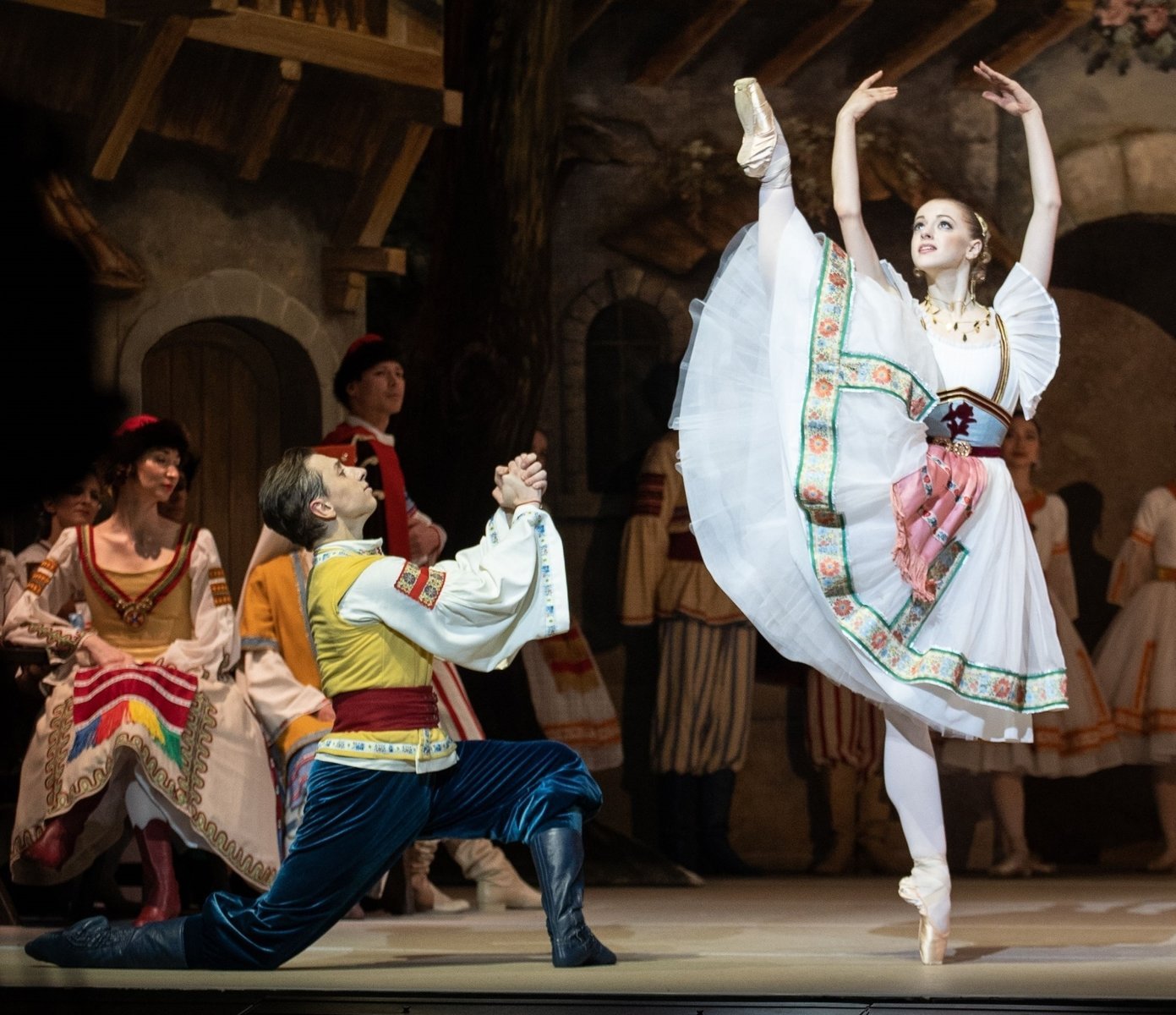
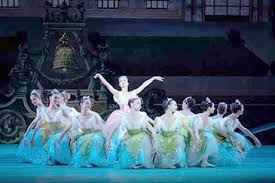
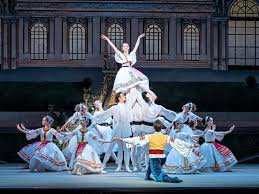
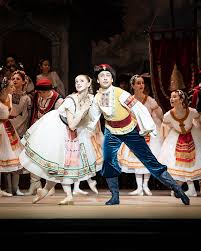
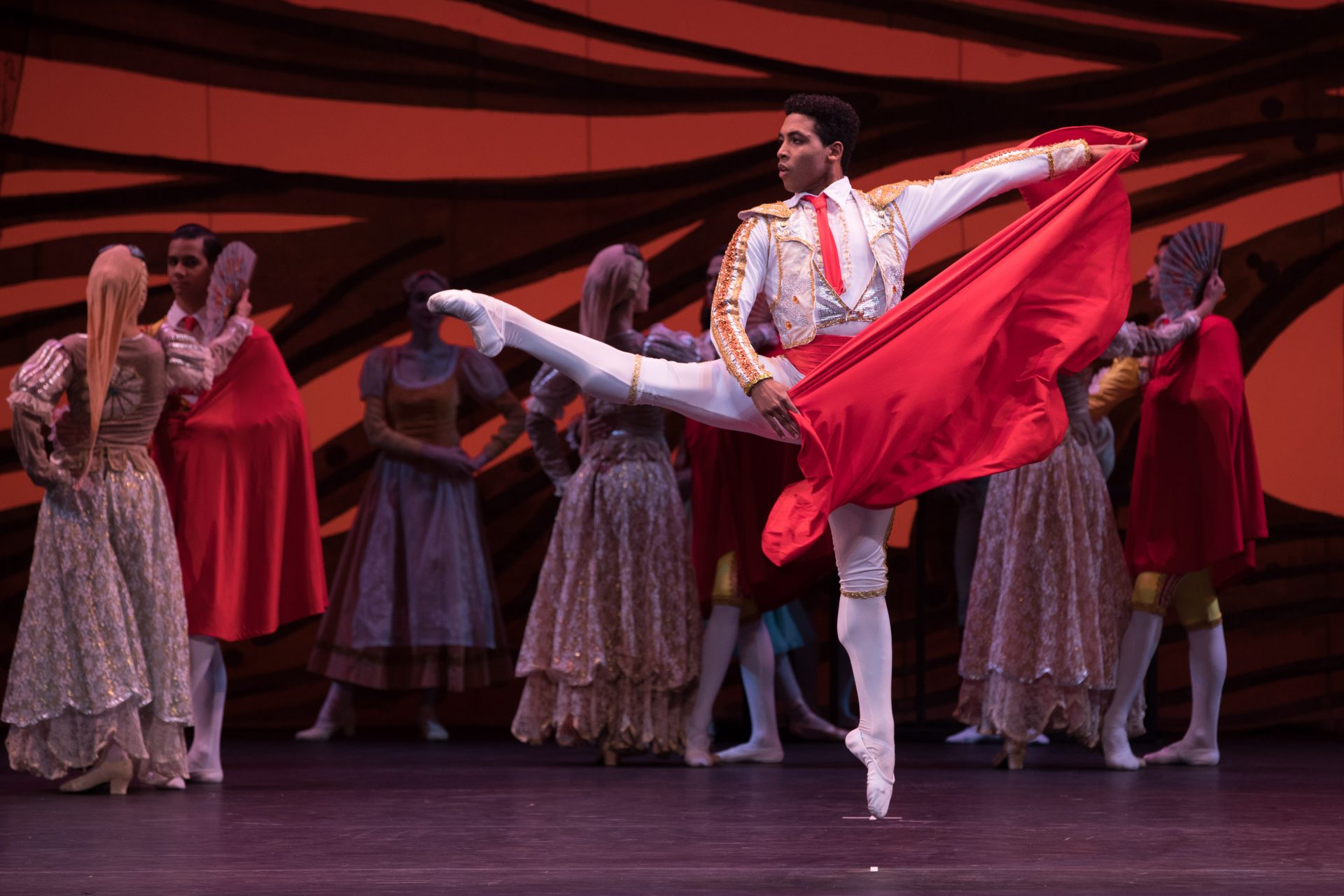



 Spring Festival
Spring Festival
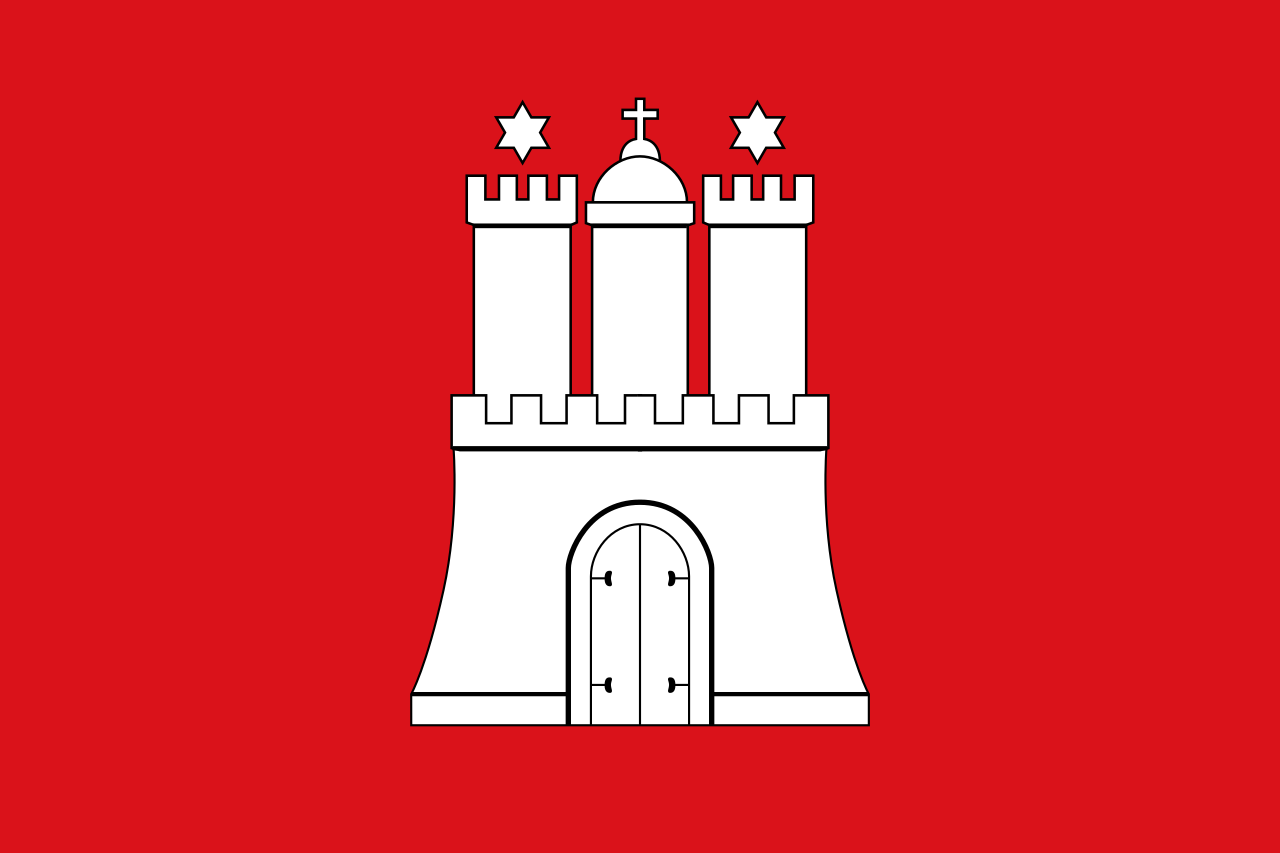 Hamburg
Hamburg